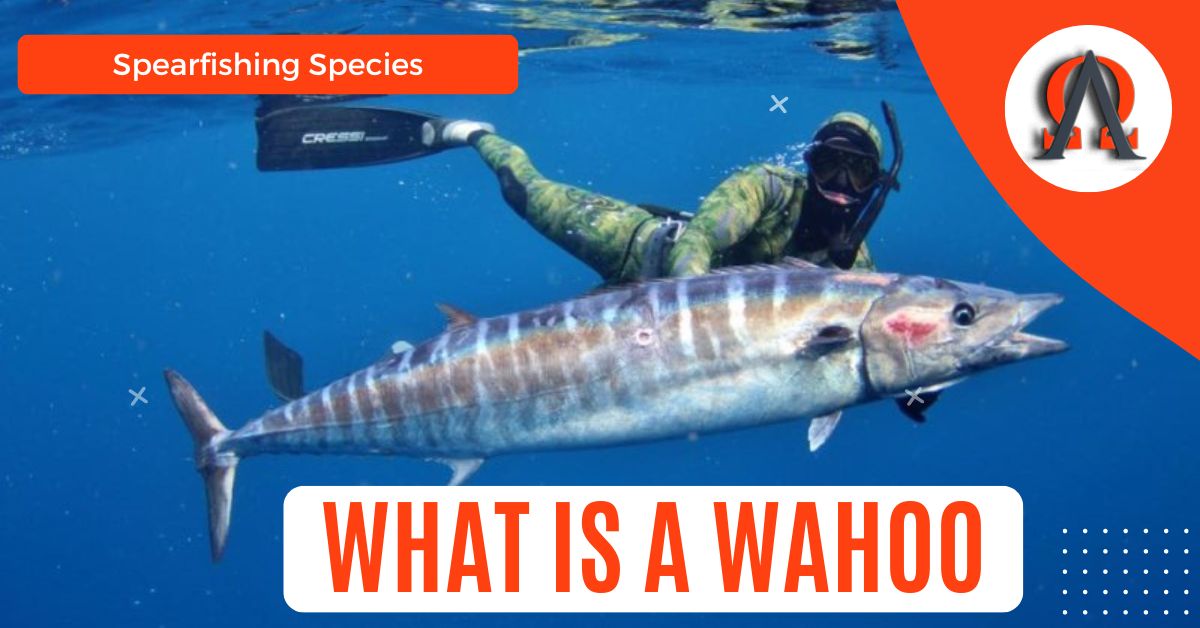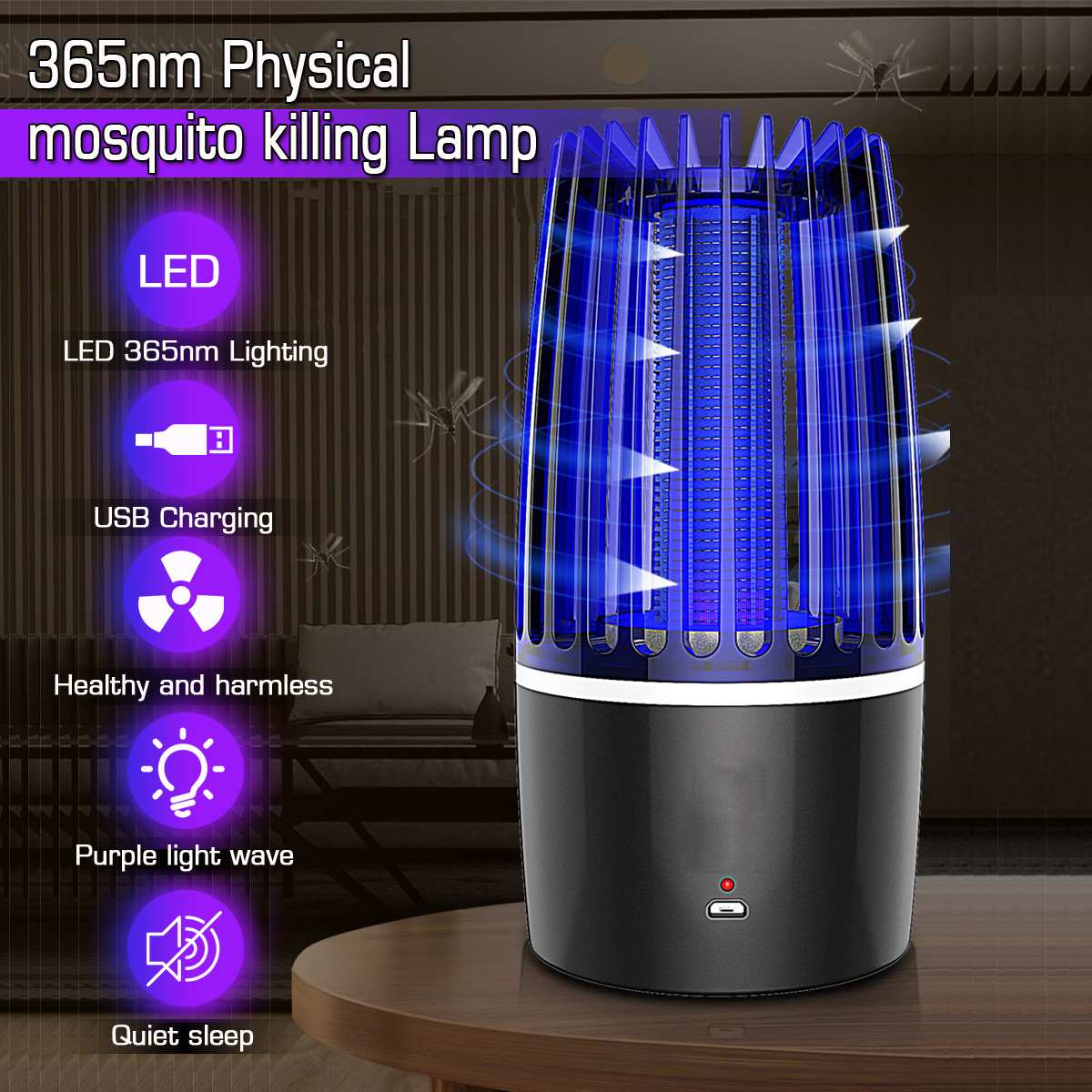
So you’re thinking of joining the two million or more people in America (and countless others around the globe) who engage in the sport of spearfishing? It’s easy to see why; the thrill of the chase, the joy of being submerged in a beautiful, alien world, the amazing sights, and even the strange sounds around you, muted as they may be. It’s just great fun and it keeps us going back time and time again. So I have put together this guide for spearfishing for beginners.
But before you ‘take the plunge’, there’s some work to do. It is vital that you know what you’re doing and what to expect. Not only will this knowledge keep you safe, but it will also help you get the most out of your sessions. So let’s dive in and learn all you need to know before you become a dedicated ‘spearo’.
Table of Contents
- What Is Spearfishing?
- Spearfishing Safety
- Getting Started With Spearfishing
- Learn The Best Places To Find Fish When Spearfishing
- Buying The Right Spearfishing Gear For Beginners
- Spearfishing Techniques Beginners Should Learn
- 8 Basic Spearfishing Tips For Beginners
- Final Thoughts On Spearfishing For Beginners
- Frequently Asked Questions
What Is Spearfishing?
Spearfishing is a type of fishing that involves spear guns, spears, and other specialized tools to spearfish underwater. It is one of the oldest forms of fishing and has been practiced since prehistoric times.
This seems obvious; however, there are common misconceptions and it’s best to be clear.
An Extreme Sport
Spearfishing is often considered an ‘extreme sport’ as it generally involves freediving (that is, without breathing equipment) and a speargun.
Is Spearfishing Difficult?
Humans have been catching fish using all manner of methods for millennia, but these days we like to make it easier for ourselves. And that’s why the speargun is a handy piece of equipment. But is spearfishing difficult?
Well, the gun gives you an advantage, but you will still have to work to earn your prey. After all, if it was too easy it wouldn’t be as much fun, would it? You’re going to have to dive and swim, to learn how to hold your breath properly and make multiple dives in search of those elusive fish.
You’ll be diving with a buddy or buddies, and you’ll be carrying a range of other equipment aside from your speargun. Generally, you’ll be diving in waters between 10 to 15 meters and no deeper. The vast majority of spearos don’t use an oxygen tank, and many resorts and countries ban this practice anyway for safety reasons.
What Is The Appeal Of Spearfishing?
The appeal of spearfishing is that it combines so many sports into one. It’s an exhilarating combination of diving, swimming, and hunting. You are almost in another world when you spearfish, and it’s this sense of adventure that keeps people coming back for more. From lakes and oceans, around coasts, reefs, and wrecks, or heading out to the open water, each has its own attractions and challenges.
Spearfishing is about respecting the environment and all life within it – including the prey we take. The ethos followed by all responsible spearos is to take only what we are going to consume. It has to be sustainable and contribute positively to conservation and ideally involves a clean, humane shot. Respect the laws of every dive site.
Spearfishing Safety
The first and most important thing anyone learning to spearfish must remember is that spearfishing is a hazardous sport. Therefore, I feel I really should cover this right away. As dull as it is to lecture on safety, it is necessary. It isn’t only your life that’s at stake, but your buddy’s too.
Twelve Beginner Spearfishing Safety Tips:
- Never dive alone – if you get into difficulty, there’ll be someone to help. Likewise, if something happens to them you’ll be on hand to offer assistance.
- Never fire a speargun out of water – this shouldn’t need saying, but this is asking for trouble. Aside from damaging the weapon, the recoil will be tremendous without the drag factor of the water as well as sending the rubber bands into your face at a hundred miles per hour. Don’t even load it when out of water.
- Never point the speargun at anyone – another no-brainer, but it’s easy to get caught up in the excitement of the hunt. Always be alert to where you’re pointing the weapon and don’t point it at your own feet either.
- Always carry a dive knife – a razor-sharp blade has got many divers out of potentially fatal situations where they became entangled in discarded rope, fishing nets, or kelp. It isn’t a weapon as such but can be used in emergencies.
- Check water quality before diving – are there any sewage outlets or industrial waste contaminating the area? You don’t want to be swimming anywhere in the vicinity!
- Make a dive plan and inform somebody – if things go wrong, there will be someone who knows where you are and what time you’re expected back. They will send help if you don’t return at the appointed time.
- Know your prey and stick to it – some species are protected by law, and some are too large or dangerous to tackle. Don’t be tempted into bagging a ‘big one’ or go for a pretty fish. You could get into serious trouble either way; one could harm you, and the other could land you with a huge fine.
- Research your environment – linked to the above point, and find out what fish are likely to be around the area where you are hunting. This includes species of sea creatures that may be a hazard, like certain types of sharks, jellyfish, or urchins. Orcas, stingrays, and even seals can be a real danger, so avoid them as much as possible. Never be tempted to reach into potholes and crevasses – it could be hiding a conga eel.
- Wear the proper gear – you might like the feeling of freedom, or you just don’t to pay for it, but it is wise to invest in a good quality wetsuit, large fins, and diving gloves. And most of the equipment is reasonably affordable anyway.
- Keep fit – don’t even think about getting in the water if you suffer from heart or lung problems. You should also avoid diving if you have an ear infection and it is a good idea to take regular exercise to keep you fit and healthy. This will improve the length and quality of your diving sessions and help to keep you safe as you will have more stamina and strength to deal with any hazardous situations.
- Keep your speargun in good condition – a properly maintained weapon will work better, last longer, and be less prone to misfiring. Focus on keeping the trigger mechanism in good order and always wash the weapon down with fresh water after every diving session.
- Use the safety catch – some spearos will advise against it, and some have even removed them. This is entirely your choice, but they’re there for a reason. It’s a good idea to use the safety catch, especially as a beginner. When you are more used to handling a speargun then it’s up to you. But the consensus amongst responsible spearfishers is that they are a good way to limit the chances of accidentally firing the weapon.
One of the very first things to do (after reading this article, of course) is to find an instructor, join a freediving/spearfishing club, and research spearfishing safety tips. Veteran spearos are great guys and an excellent source of advice. They will stress the need to practice before you even get in the water.
How To Practice Spearfishing For Beginners
As mentioned earlier, you’ll be making multiple dives for each session. Therefore, you need to make sure that you are ready to handle the physical requirements of the dive safely. This requires practice.
Holding Your Breath
Training courses are available that teach you how to hold your breath (known as apnea training). Believe it or not, there’s a skill to it, as well as ways to increase your breath hold that will extend your dive times safely. Don’t do this by yourself, and not alone or in water. Experienced spearos can hold their breath for up to three minutes, by staying warm, moving slowly, and conserving energy. With time and training, this could be you.
Learn How To Equalize
Also, you need to know how to equalize properly. When you reach a certain depth below water, the pressure will build in your middle ear where there are ‘dead air’ spaces. This can cause discomfort and pain, but also could damage your hearing. The Eustachian tubes that connect your middle ear to the back of your throat are usually closed. The best way to equalize the pressure is to open these tubes simply by swallowing – that’s the ‘click’ sound you hear sometimes. If this doesn’t work, hold your nose and blow gently until you feel the ‘pop’, but not too hard or you may damage your ears.
Spearfishing With Sharks
Leading on from this is the subject of sharks. Many people ask the question ‘does spearfishing attract sharks’. The simple answer is no. Sharks have a special place in our fears and nightmares. However, as long as you pay attention and be cautious, you should be completely safe.
With regards to sharks, there are many different species, but even the smaller ones can cause you harm under certain circumstances. The best thing to do is to avoid them. An encounter with a Great White is unlikely unless you go looking for one. But when other sharks are around don’t be tempted to take a shot. The last thing you need is to be at the center of a feeding frenzy when the others smell blood. So, respect them, and avoid disturbing them. If in doubt, get out!
Getting Started With Spearfishing
The best way to get started spearfishing is to do some research and get in touch with spearfishers where you live. There are also many websites, videos and blogs that will provide you with lots of spearfishing advice and tips. Learning spearfishing is a lot like learning to drive; it requires hours of practice and plenty of patience. With the right guidance, spearfishing can provide you with an incredible experience of a lifetime in the ocean.
Learn The Best Places To Find Fish When Spearfishing
Feeding Areas
Fish love to congregate in good feeding habitats, which is why you’ll find them gathering around piers, reefs (even artificial ones), wrecks, caves, and so on. They love undulating, rocky coastlines with a good tidal flow. It’s best to find a balance here though. You don’t want to be constantly battling with the current or rough waters, but neither do you want to sit in a sheltered area where there are no fish! Also, be aware of other people using jetties and piers, like anglers, boat users or even swimmers.
Deeper Water Nearby
It helps if there are deeper waters nearby, as this contributes to the diversity of species which means more food and more fish. Navigation charts or even Google maps can help identify reefs and other potential spearfishing sites, but local knowledge is usually the best source of information, so ask around.
Wrecks
Wrecks are particularly good fun to hunt inside, but always stay alert to the dangers; keep a clear escape route and never let your buddy out of sight. They are also the favored haunt of large eels, so be careful!
Bluewater Hunting
Some spearos prefer ‘bluewater’ hunting, heading out to the open waters where bigger (pelagic) prey tends to live and you can’t see the sea bed. For this environment, you’ll need different gear.
- A more powerful speargun
- Long fins with ‘keepers’ to keep them in place (it reduces noise, but if they come off you’ll never see them again)
- A weight belt to help you stay below the water with neutral buoyancy
- A decent wetsuit – ideally camouflaged – to keep out the cold and reduce chances of being spotted by prey. A marker buoy is advisable too, to alert others to your position in the water.
Buying The Right Spearfishing Gear For Beginners
Now, this is a subject in itself and far too broad to tackle right here. For a beginner, it’s not a great idea to immediately splash out on a load of expensive equipment. You need to get a feel for it first and invest in better gear once you are more proficient and certain that this sport is for you. I will just briefly cover some of the spearfishing gear beginners may need.
Speargun
By all means, get hold of a serviceable speargun – it may be that kind spearo will lend you one, or you could even rent one. Stick to the basics, gain some experience and listen to the advice of experts. In the meantime, go online and drool over the huge range of spearguns out there. Take your time in selecting one, or possibly two. Initially, buy a weapon that suits the environment where you’ll be spending most of your time. If reefs, caves, and wrecks are your thing, you’ll need a shorter gun to fit into more enclosed spaces.
Mask and Snorkel
A good mask is essential and will be your viewport to the underwater realm. Take your time in selecting it – try several on to check they fit your face properly and there are no leaks.
Snorkels are personal preference, but the simpler ones with a flexible plastic tube and basic valve are probably best to start with.
Fins
For spearfishing, you’ll need fins that are long, but not too stiff. You’ll be using them to move with speed and agility and also kick gently, without making too much noise.
Spearfishing Wetsuit
A spearfishing wetsuit will keep you invisible and warm in the water. Look for one that doesn’t restrict your movement too much, but still gives you insulation – a 3mm to 5mm neoprene suit should be fine. Camouflage patterns are better for spearfishing and spearos often wear a hood and ‘glove’ accessories too.
Weight Belt
A weight belt is essential for spearfishing, with lead or steel weights. You’ll need to adjust the amount of weight depending on whether you are wearing a wetsuit and how much air there is in your speargun.
Spearfishing Knife
A spearfishing knife is essential for any underwater hunter; it should have a spear-tip point and a decent blade with a serrated edge, so it can be used to cut rope, spear shafts and even fish.
Float and Flag
A spearfishing float is basically an inflatable buoy with a spear-tip flag attached. It’s essential for safety when spearfishing, as it marks your location to other spearos and boaters.
Spearfishing Techniques Beginners Should Learn
There are a few spearfishing techniques beginners should learn about before heading out. We’ll just go over the basics here, but talk to spearfishing veterans and do some research on your own to get more info.
Chumming When Spearfishing
Chumming is spreading a trail of bait into the water, to draw fish toward spearfishermen. It’s mainly used in bluewater spearfishing, where the fish are further away and it’s harder to spot them. The chum trail should form a ‘V’ pattern and be wide enough, so the fish have time to spot it and are drawn into a spearable area.
Use Flashers As Bait
Flashers are basically dangling pieces of reflective material or lights, designed to attract the prey’s attention and draw them closer. You use a separate float and tie the flasher off to that with at least 2 or 3 yards of line.
The Hiding Spots
What I mean here is you need to find those out-of-the-way hiding spots that fish will use. Look for the darker spots in the reef, small caves and crevices, where fish will hide when they are scared.
Setting Up An Ambush
Ambushing is when you wait in a specific spot, because you know the fish will pass there. It’s best for spearfishing in reefs, as you will be able to spy on the fish and spear them when they come within range.
“Spot And Stalk” Spearfishing
Spot and stalk spearfishing is when you spot a fish, then swim towards it slowly and quietly, without being detected. When you get close enough, spear your prey and then quickly swim away. This technique works best in shallower waters, where spearfishing from the surface is not possible.
Fishing From The Surface
This is a spearfishing technique for shallow waters, when you can see the fish from the surface and spear them without having to dive. You can either spear the fish with a long spear or use a speargun from the surface.
Find Dirty Water
Dirty water is basically when the visibility is poor, due to sediment or surface agitation. Fish will usually use this kind of water as cover, as they know it will be harder for spearos to spot them. Try spearfishing in areas where the water is murky or choppy, as there might be more fish.
Fish The Tides
Tides are important for spearfishing, as fish will usually feed more actively during particular tides. Learn the local tides and plan your spearfishing trips for the best times.
Final Thoughts On Techniques
When people start something new they always seem to pick one way of doing it and sticking with it. Don’t do that when spearfishing. Try all the spearfishing techniques you can, and see what works best for you. Mix them up and combine them, so you can create your own spearfishing style.
8 Basic Spearfishing Tips For Beginners
- Learn, learn, and learn some more. You need to understand spearfishing before you can be successful in it. Talk to every experienced spearo you can and learn from them. Read and watch videos as much as you can. Know your local spearfishing regulations and obey them. Be aware of spearfishing etiquette and know the local spearfishing customs.
- Scout before you head out. Learn the spearfishing spots, so you know where to go when the conditions are right. Have a look at local charts and maps to find out the underwater topography and structure.
- Stay positive. The right tools help you catch more fish, but it’s your mindset that will get the job done. A positive attitude and some preparation goes a long way in this sport of ours!
- Buoyance is important. Make sure you practice good buoyancy control, so you don’t disturb the environment.
- Take a buddy with you. Always spearfish with a buddy, for safety and to share the experience.
- Stay calm and relaxed in the water. This will help you move more naturally and swim more efficiently.
- Stay low in the water and be as quiet as possible. Any sudden movements or splashing could scare away the fish.
- NEVER QUIT! No matter what, never give up. Even when the spearfishing is tough and you can’t seem to get a bite, don’t quit! Keep trying and you will find success in spearfishing.
These are just some of the spearfishing tips for beginners that I could think of. With practice and patience, spearfishing will become second nature to you and your success rate will go through the roof! Good luck out there, spearos!
Final Thoughts On Spearfishing For Beginners
So, now you’re better prepared to begin your spearfishing adventure, go ahead and enjoy the hunt. Do it responsibly, do it safely, and always watch your buddy’s back. Spearfishing is a fantastic way to see nature, contribute to ecological, sustainable conservation, but most of all, it’s pure fun. So go out there and spear some fish!
Keep in mind that spearfishing is a skill that takes time to master. Be patient and take your time to learn the techniques and safety rules. Spearfishing is a rewarding activity that requires dedication and practice, so don’t give up! With these spearfishing tips for beginners, you’re well on your way to becoming a successful spearfisher. Good luck
Frequently Asked Questions
How do I get started with spearfishing?
The best way to get started spearfishing is to take a course or join an experienced spearfisher. They can show you the basics and teach you spearfishing safety. It’s also important to do research about spearfishing regulations and laws before heading out on the water.
Is spearfishing hard to learn?
Spearfishing is not difficult to learn, though it does take some practice. With the right spearfishing tips for beginners and guidance from an experienced spearfisher, anyone can learn to spearfish. Be sure to get the proper gear and research spearfishing regulations before heading out. With a little bit of patience and dedication, spearfishing can become a rewarding activity.
What basic equipment do I need for spearfishing?
The basic equipment you need for spearfishing includes a spear gun, spearfishing wetsuit, fins, mask, and snorkel.
How much does it cost to start spearfishing?
The cost of spearfishing can vary depending on the type of spearfishing you want to do and the gear you need. Generally, basic spearfishing gear like spear guns, wetsuits, fins, masks, and snorkels will cost around $500-$1000.
Featured Photo by Cast & Spear
Latest Posts
- Hopping into Adventure: My Experience of Rabbit Hunting in Wyoming
- The Guide to Discovering Black Bears in Wyoming: Where to Search for These Mighty Creatures
- Best Ways to Start Spearfishing – Is Scuba Diving or Freediving the Best Way?
- Discovering the Art of Mule Deer Hunting: Tips and Tricks for Finding Your Next Trophy Buck
- Surviving the Wild: Mastering the Art of Building a Fire in the Mountains





